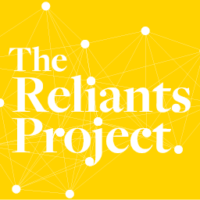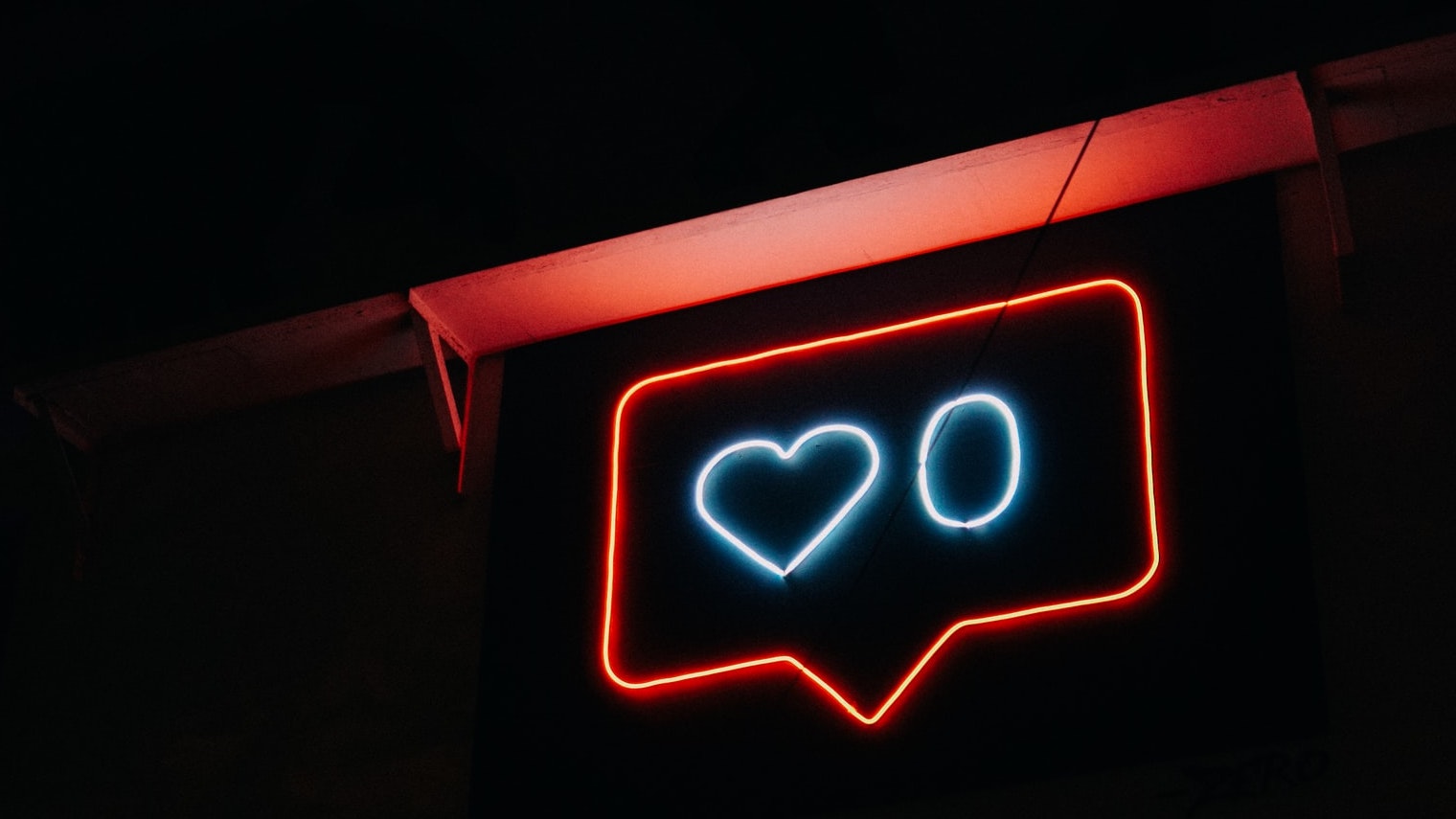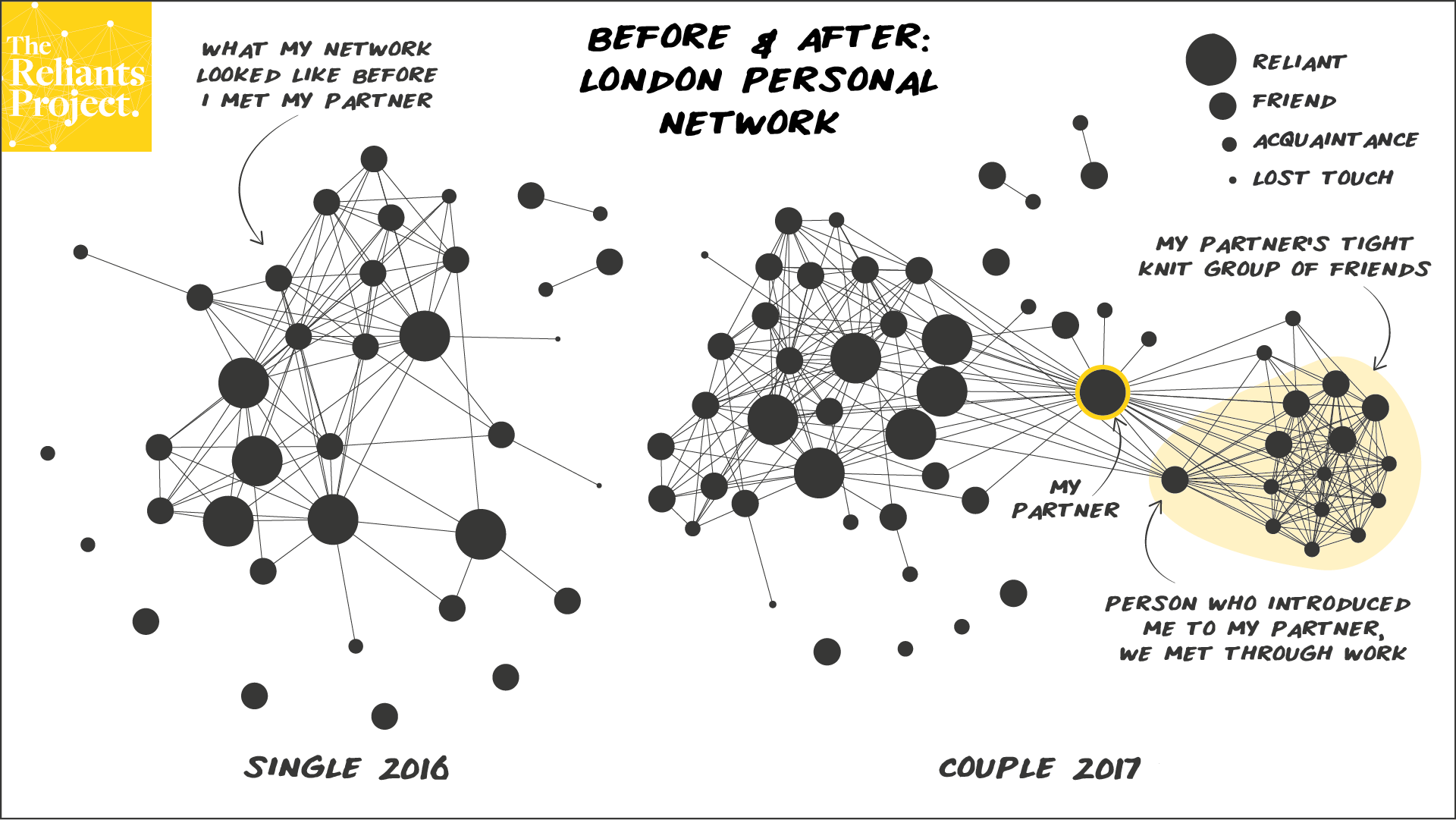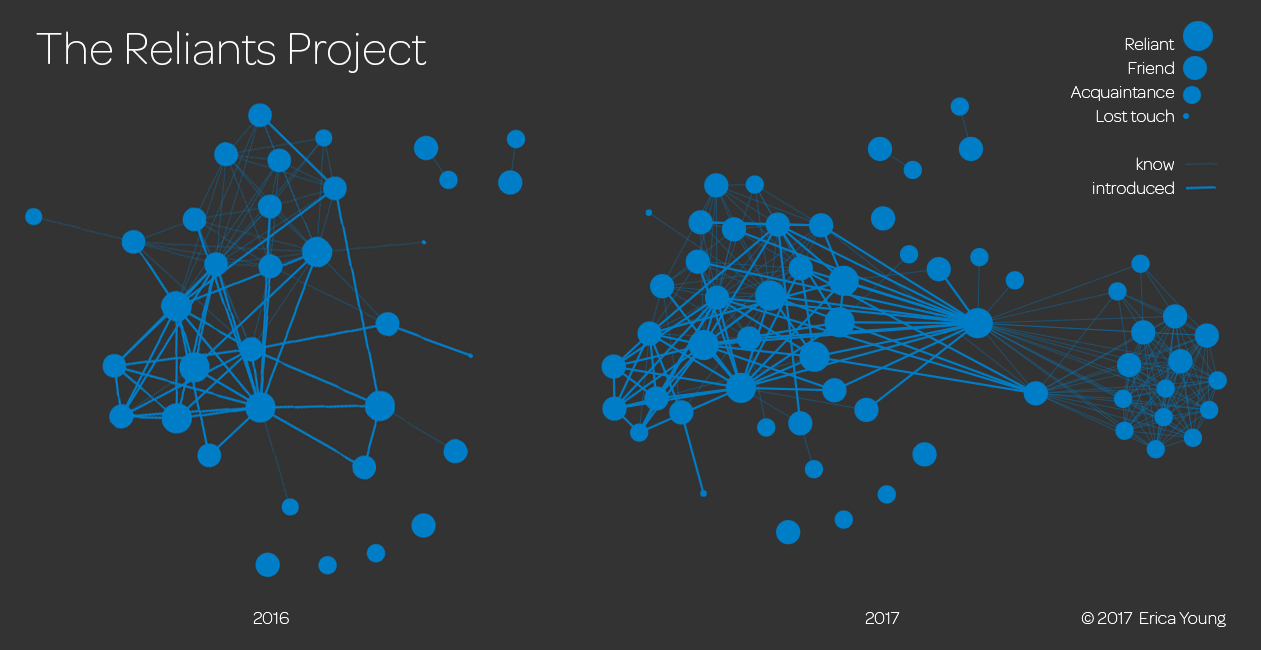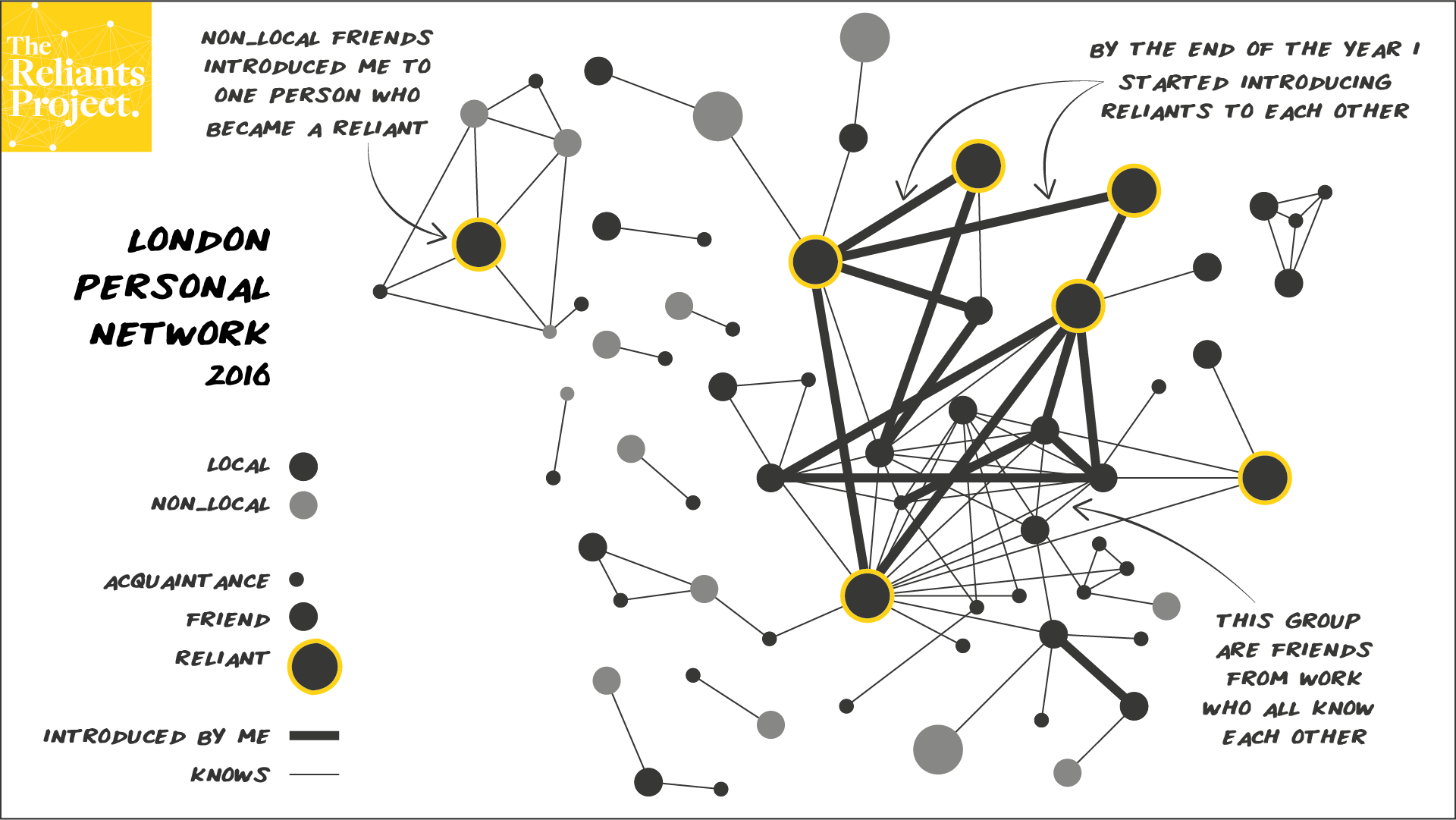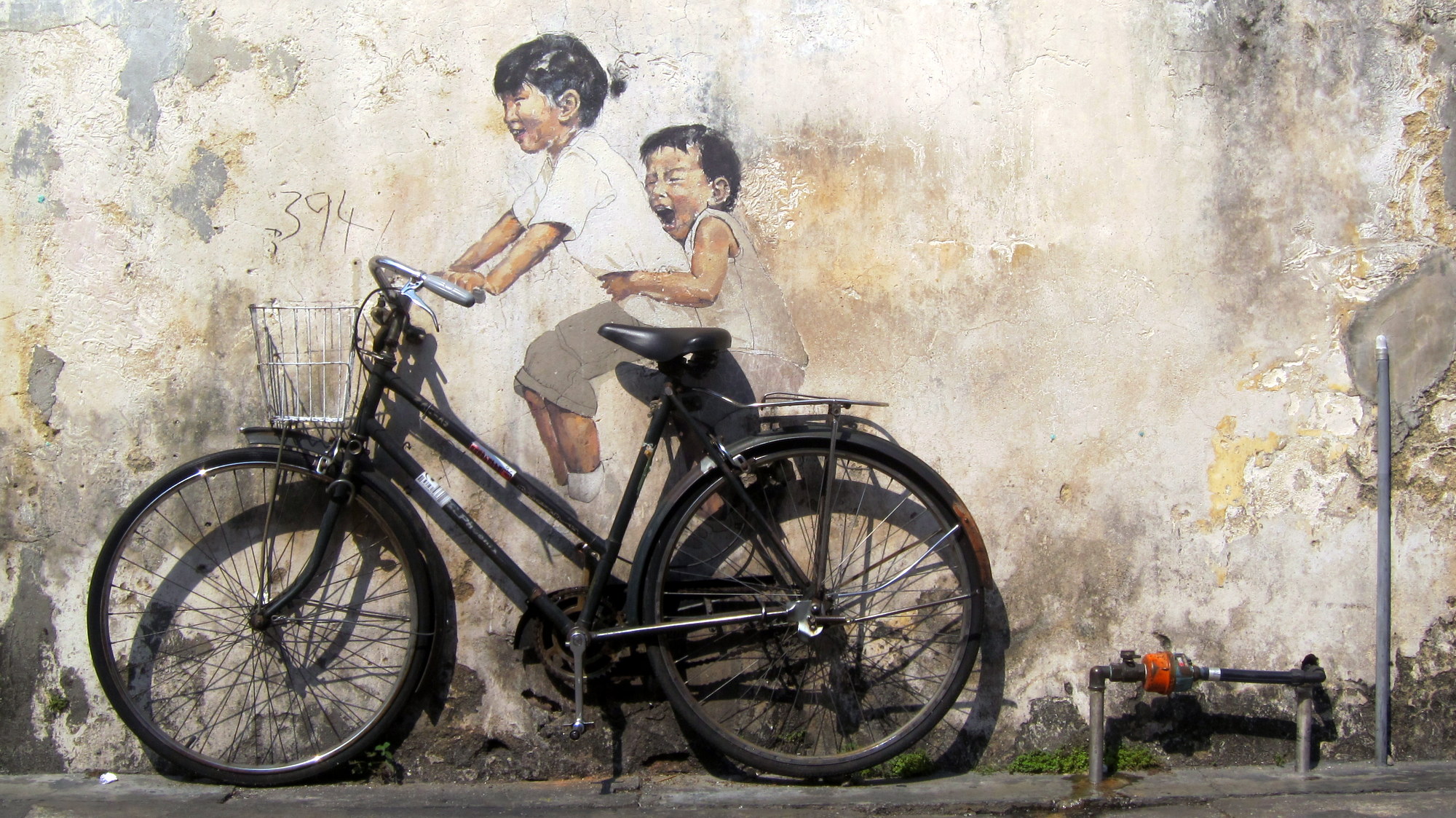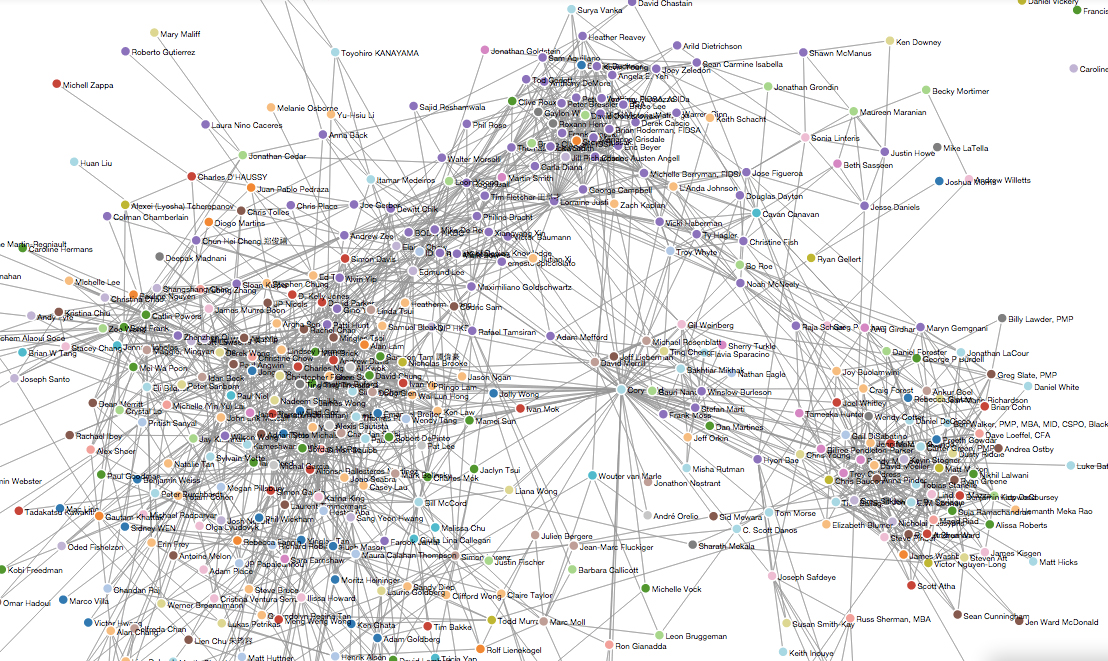Can hardly believe it has been over a year since I moved to London! As an anniversary present, London gifted me a serendipitous friend. Until then, every new friend was the result of either a direct introduction or an event that both people intentionally attended. It’s a rare treat to meet anyone during in-between states; in public places, on transit. I treasure those moments because they often expose a ‘small world’ coincidence or a completely new, fascinating world.
Additionally, I participated in Wait But Why‘s inaugural Wait But Hi event in August. They asked their readers to fill out a (long) survey and then matched them in groups based on their interests and preferences. Some people were set up on individual blind dates while others participated in large group educational seminars (and many variations between). What a fascinating experiment in community building.
It’s official! I have completed a full year of The Reliants Project and have learned an incredible amount about how to build a community in a new city – not to mention all the wonderful new friends I have made. Here are my recommendations if you’re moving to a new place:
- Ask your friends (wherever they live) to make direct introductions to people they know in your new place.
- Attend public Meetups or other events with less than 45 people on topics that are of particular interest to you (the more niche, the better).
- Seek out super-connectors and hosts (and then attend their events to meet new people through them).
- Make time for new relationships to strengthen by meeting one-on-one and introducing them to your own network.
Existing friends don’t directly translate to new friends.
Even after a year in London, I have only received a handful of direct introductions from my pre-existing local network.
There are still several people I knew before that I haven’t managed to meet with myself! Non-local and new friends were significantly more likely to introduce me to people in their network, as were friends from elsewhere that moved to London after me.
There seems to be an inverse relationship between the size of events and friendships made. Conferences, large parties and other groups with more than 45 people seem to make meaningful interactions hard to come by. Direct introductions and small gatherings seem much more effective environments for building friendships, particularly if they are hosted by super-connectors.
Super-connectors increase the number of people you meet but don’t necessarily result in stronger friendships. There are probably 4 people in my network that I would label super-connectors. They have each invited me to 3 events where there were at least 15 people in attendance. Only one of the people I met at these events now falls into my close friend category, but they make up the bulk of my acquaintances.
The rhythm of making friends is cyclical. There seems to be a natural balance between building relationships and maintaining them. While I focused my time over the first 3 months meeting new people, I quickly fell into a pattern of strengthening those relationships rather than continuously seeking new ones. Typical holidays, vacations and work schedules also had an impact on the frequency of events where I could meet new people.
Categorising relationships is incredibly difficult and changes over time. While I didn’t actively track the progression of people from acquaintance to friend to close friend to reliant, a few familiar patterns emerged. The analogy that comes to mind is that of a staircase, where certain catalysts would propel the relationship to a higher step. Most commonly, neither person was motivated to maintain engagement, so we didn’t even become acquaintances.
Sometimes there was mutual interest in building a friendship, but after several failed attempts to meet, it never made it past the acquaintance stage.
If we managed to avoid those pitfalls, it often developed into a friendship. Significant life events have the potential to be both a positive and negative catalyst, best at bringing people closer together through shared experiences or need for support.
The stats. My London personal network has grown about 4x over the last year. That ~90 person network breaks down as follows (again, based on how social networks are often categorised).
- 50 acquaintances (i.e. see them socially)
- 20 friends (i.e. would invite to a group dinner)
- 10 close friends (i.e. often hang out 1-on-1)
- 7 reliants (i.e. would ask to help move flats)
Of the reliants, 4 were pre-existing friendships, 2 of which grew from a friend to reliant in part due to living in the same city. One of the new reliants was directly introduced to me and I met the other 2 on my own at niche public events. Among the close friends, half were directly introduced and the other half I met at events. Friends are disproportionately from my pre-existing network, but that’s probably because they ‘stood the test of time’ (and distance). I met most ‘acquaintances’ at private events, which makes sense because they are part of the same social circle but I haven’t built a meaningful relationship with them individually.
In order to grow that network, I attended about 25 public events (activity-based events, conferences, Meetups, etc.) and about 40 private events (where more than 3 people participated and I didn’t know everyone). I also met with 30 people that were directly introduced to me. Those introductions came from about 65% non-locals friends, 30% from new local friends and just 5% from pre-existing local friends. The graph below shows how many people I met per month over that time.
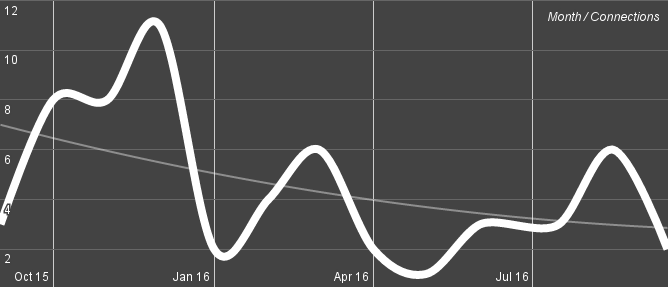
What’s next? Right now I’m interested in gathering information about my entire personal network in the hopes that it will provide more insight into how it has changed over time.











